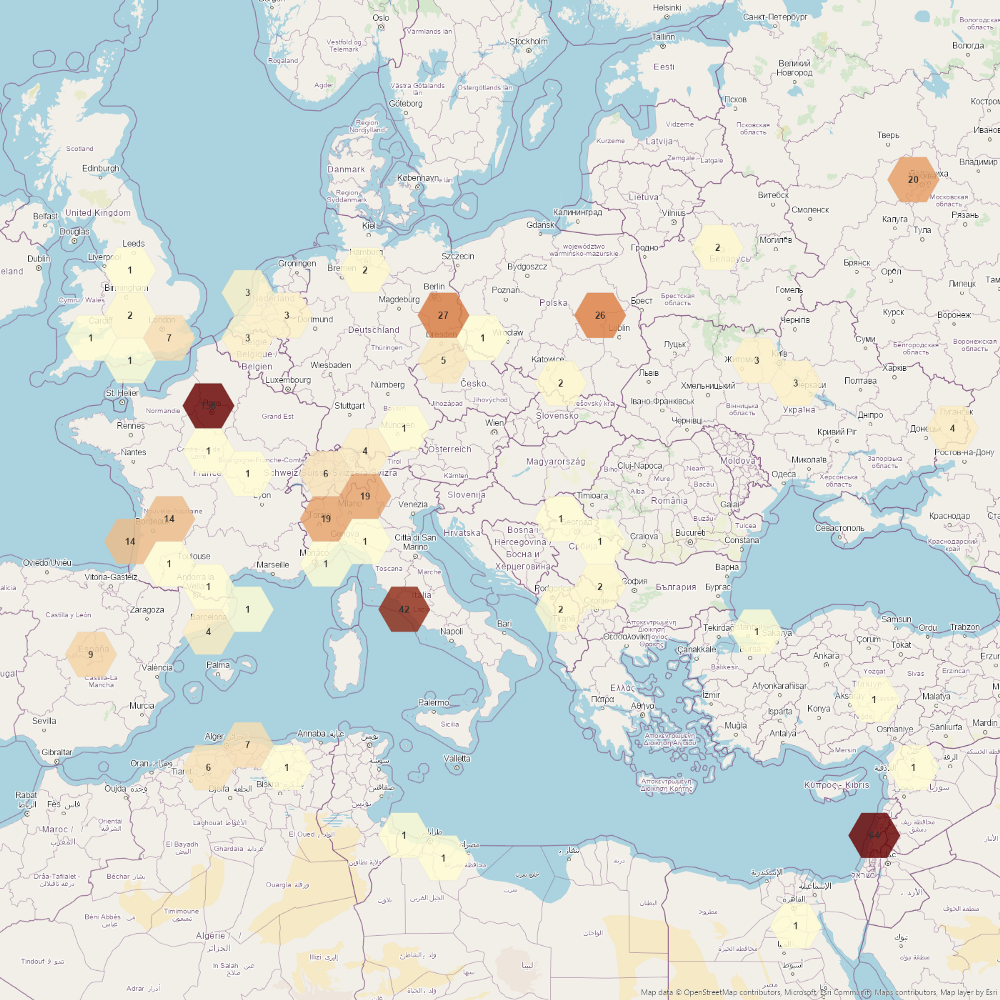fires module
Query broadcasted news related to wildfires and visualize them using spatial aggregations.
The service filters thousands of online news sources mentioning occurred wildfires. We constructed a web mercator spatial grid having a grid size being optimized for geographic visualization. Each grid cell is enriched with a count attribute representing the number of news article related to locations of the corresponding grid cell.
The service uses the impressive data source provided by the Global Database of Events, Language and Tone (GDELT) Project. The service aggregates locations where some kind of wildfire took place using geospatial intelligence operations. The geospatial results support the GeoJSON and Esri Features format out of the box.
All endpoints support a date parameter for filtering the results. For best sustainability, the serverless cloud-backend queries the articles from the knowledge graph and calculates the geospatial features on-the-fly.

For example:
>>> from georapid.client import GeoRapidClient
>>> from georapid.factory import EnvironmentClientFactory
>>> from georapid.fires import articles
>>> host = "geofires.p.rapidapi.com"
>>> client: GeoRapidClient = EnvironmentClientFactory.create_client_with_host(host)
>>> articles(client)
- georapid.fires.aggregate(client: GeoRapidClient, date: datetime = datetime.datetime(2023, 5, 21, 17, 28, 50, 141657), format=OutFormat.GEOJSON)
Aggregates the broadcasted news related to wildfires using a spatial grid and returns the features as hexagonal bins. The date is optional. When not specified, we use datetime.utcnow(). The underlying knowledge graph collects data from ‘2015-03-01’ up to today. The format can be GeoJSON or Esri JSON.
- georapid.fires.articles(client: GeoRapidClient, date: datetime = datetime.datetime(2023, 5, 21, 17, 28, 50, 141660))
Returns a list of broadcasted articles related to wildfires. The date is optional. When not specified, we use datetime.utcnow(). The underlying knowledge graph collects data from ‘2015-03-01’ up to today.
- georapid.fires.query(client: GeoRapidClient, date: datetime = datetime.datetime(2023, 5, 21, 17, 28, 50, 141661), format=OutFormat.GEOJSON)
Returns the locations related to wildfires. The date is optional. When not specified, we use datetime.utcnow(). The underlying knowledge graph collects data from ‘2015-03-01’ up to today. The format can be GeoJSON or Esri JSON.